Ten invasive species of the Chesapeake Bay
Meet the most disruptive invasives currently living in the Chesapeake Bay watershed

Every day, non-native plants, pests and diseases are introduced to the United States from around the world. These invaders have the power to out-compete native species, causing damage to ecosystems and local economies.
Typically, non-native species travel to new areas by hitching rides on trade ships, travelers’ luggage and recreational vehicles. As a vacation destination, shipping hub and home to more than 18 million people, the Bay is particularly at risk for invasive species introduction. Although not all invasive species are a threat, it is important to know which ones can and have caused widespread damage
Blue Catfish
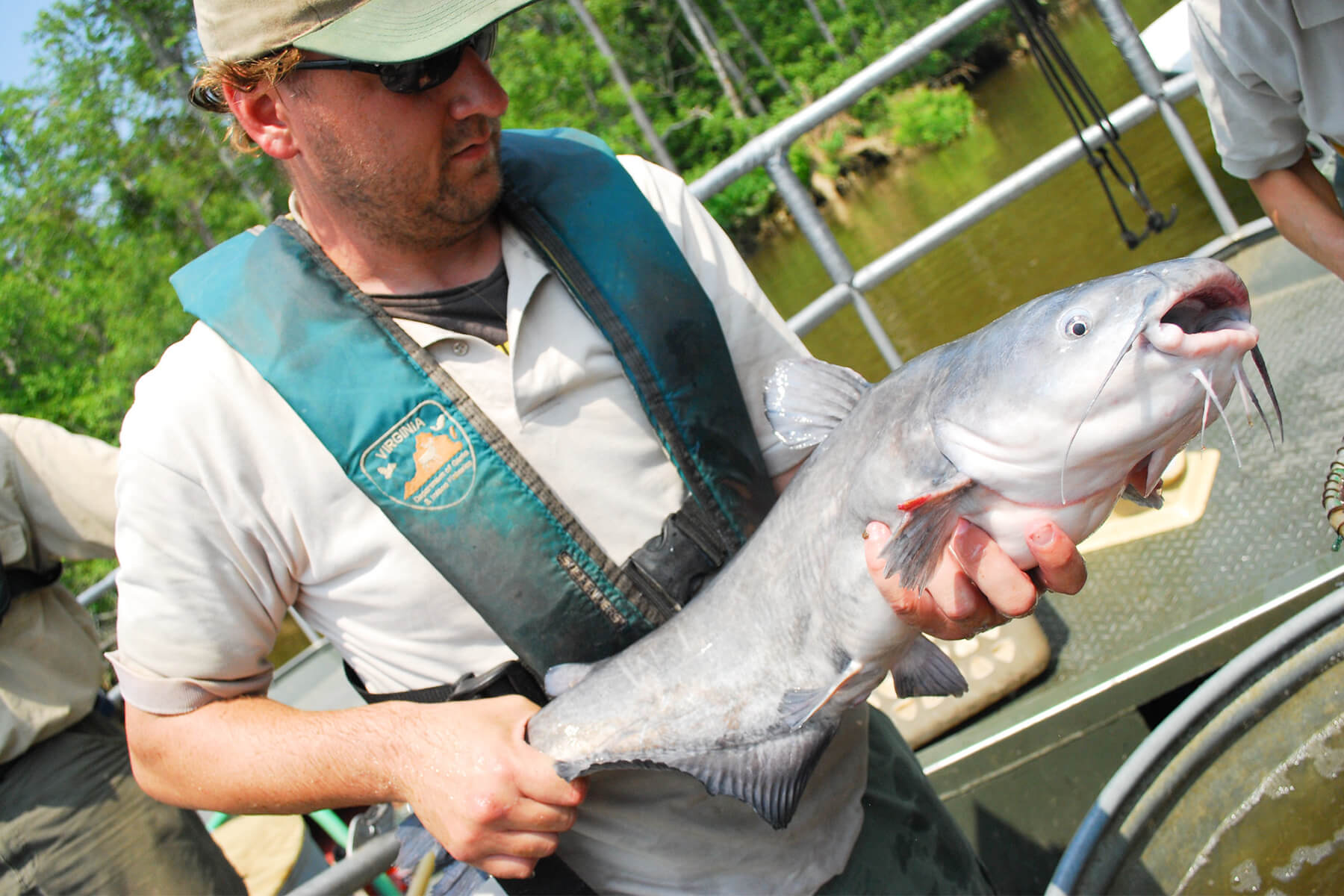
The blue catfish is a large, smooth-skinned fish with a bluish gray body and whisker-like barbells around its mouth. It is native to the Mississippi, Missouri, and Ohio river basins but was introduced to the James, Rappahannock, and York rivers during the late 20th century.
Blue catfish are considered invasive because of their active reproduction rates and large appetite for native fish and shellfish species. The fish feeds mainly on shad, menhaden, blue crab and river herring and has few natural predators that can prevent it from out-competing native species. Blue catfish can grow up to 100 pounds, live up to 20 years and are thought to make up 75% of the fish biomass in some portions of the Bay.
Mute Swans

The mute swan is a large, aggressive bird that is native to northern and central Eurasia. It was introduced to North America in the mid-1800s to add ambiance to parks and ponds, but individuals quickly escaped, set up nesting territories and the population spread.
A single mute swan can consume between 4 and 8 pounds of submerged aquatic vegetation daily, threatening important native aquatic plants. Mute swans are one of the most aggressive waterfowl species in the world, especially when nesting or brooding. They have been known to chase off, injure and even kill native waterfowl species
Zebra Mussels
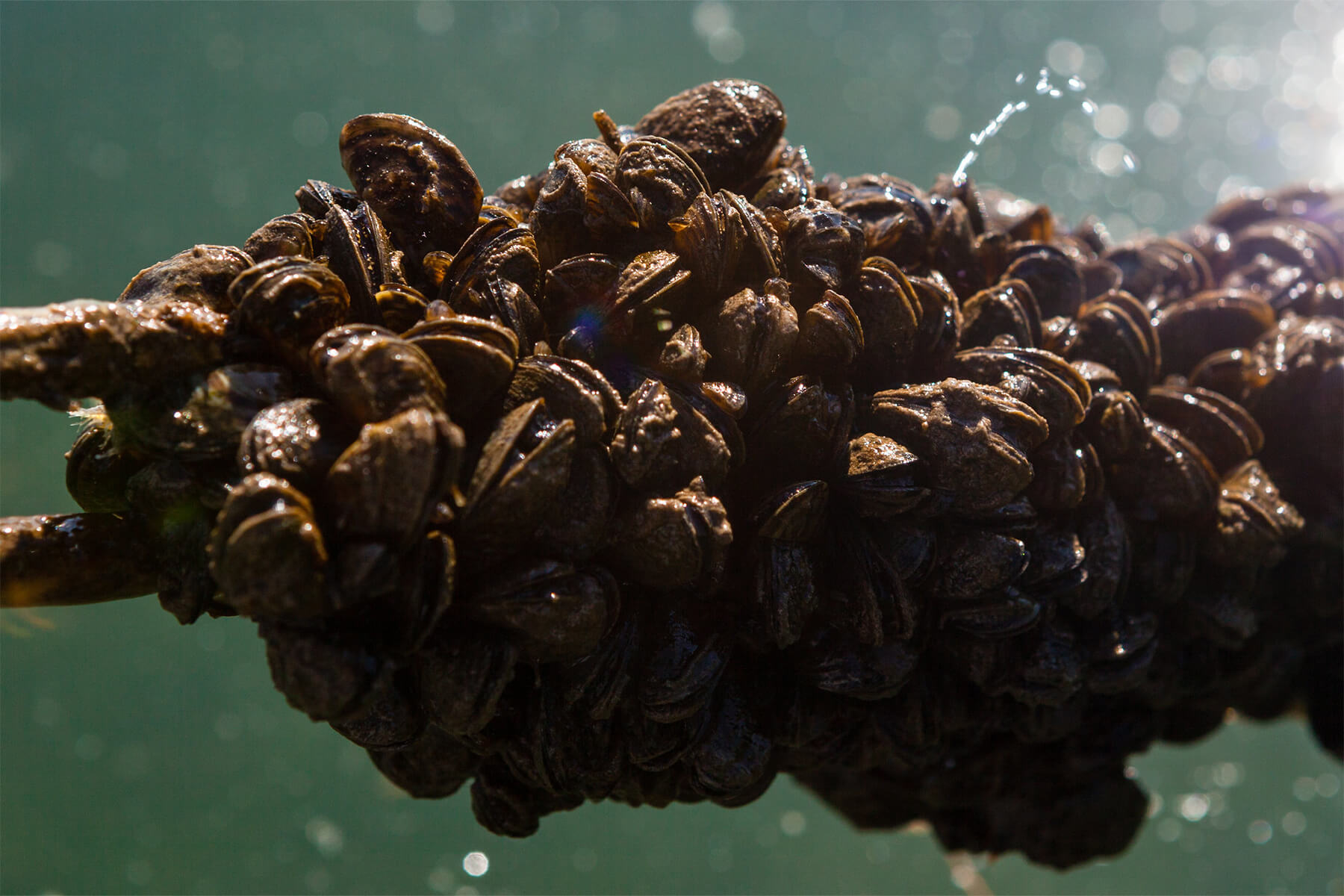
The zebra mussel is a tiny bivalve with zebra-like stripes and a triangular shell. It lives in freshwater lakes, rivers and reservoirs in parts of the Bay watershed. It was introduced to the Great Lakes region in the 1980s, most likely via ballast water from a European ship, and quickly spread throughout the United States.
Once introduced to a waterway, the zebra mussel attaches itself to hard surfaces and can produce millions of offspring annually. Zebra mussels compete with native bivalves, fish and invertebrates for plankton and are responsible for the drastic decline of native clam, mussel and oyster populations in some areas.
Nutria
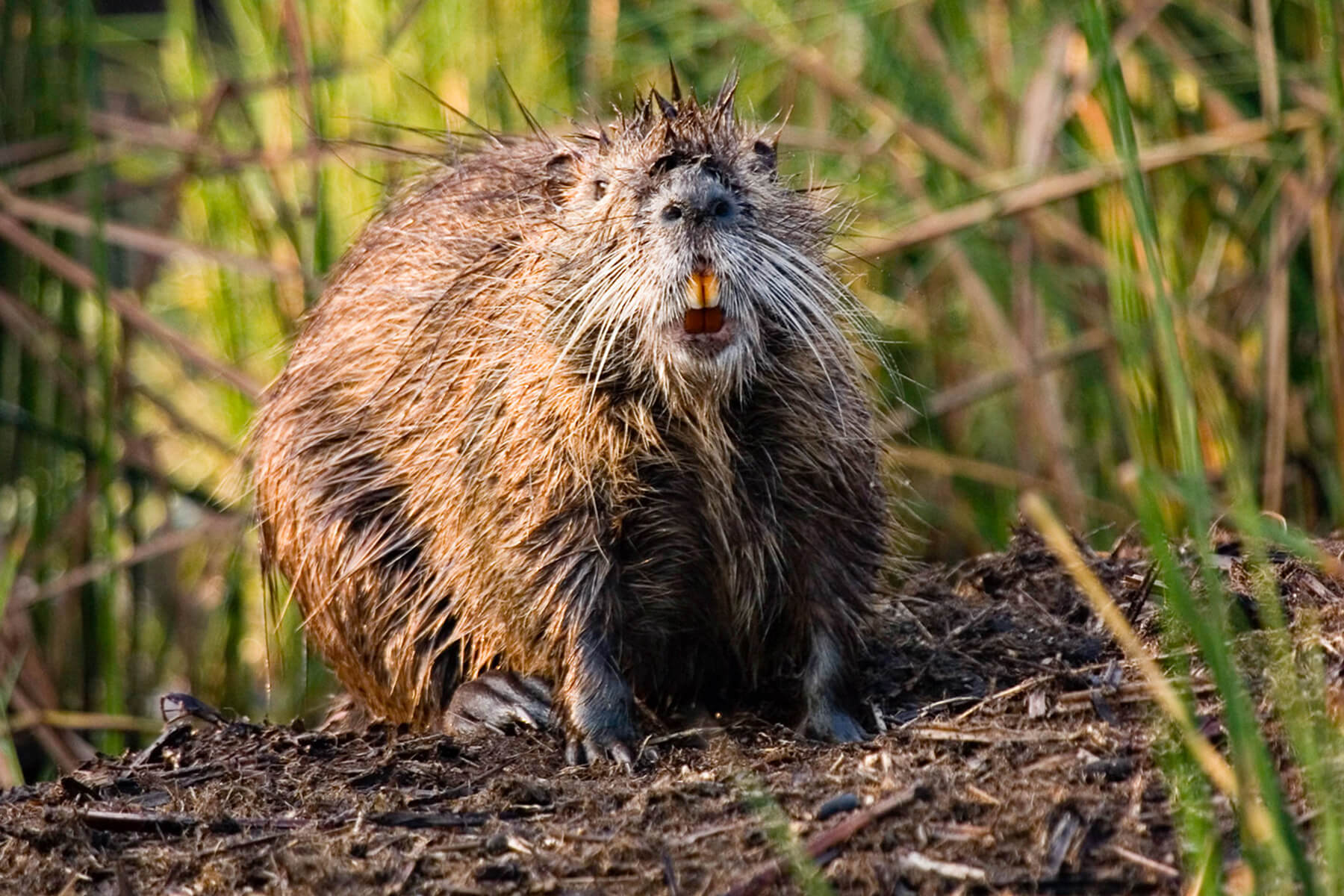
The nutria is a large, brown, semi-aquatic rodent that looks like a beaver and lives in marshes and wetlands on the Delmarva Peninsula and other parts of the Bay watershed. Native to South America, the nutria was introduced in Maryland to Blackwater National Wildlife Refuge in 1943 for fur farming.
Escaped animals soon began to reproduce, bearing up to three litters of four offspring each year, spreading rapidly. In Maryland, nutrias are the greatest threat to salt marsh habitat because they use their front teeth and feet to dig into the marsh and feed on roots and plants which causes significant erosion.
Phragmites
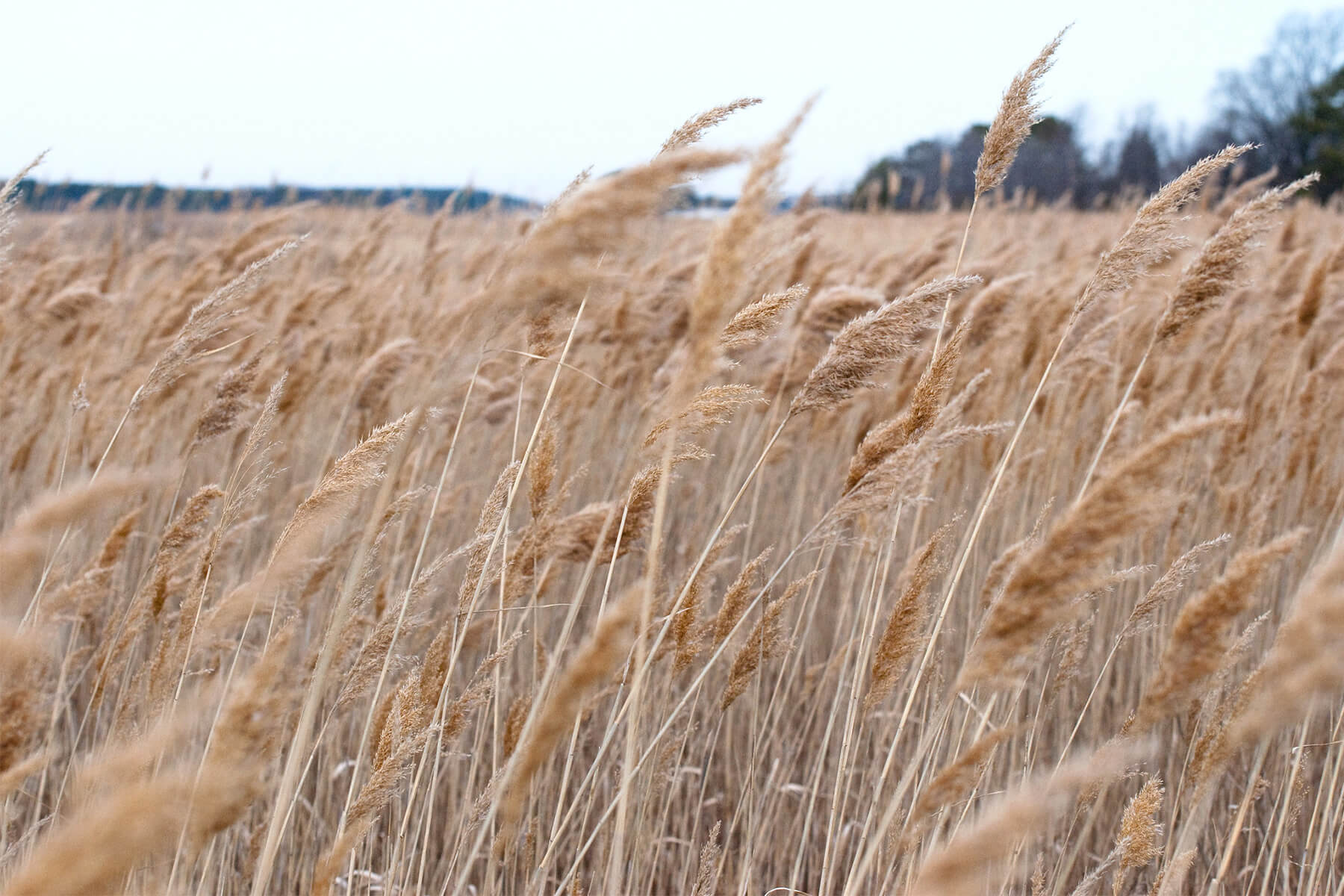
Phragmites is a perennial plant with feathery plumes at the top of tall, stiff stalks. They grow in wetlands, along roadsides and along shorelines throughout the Bay watershed and can reach heights of 15 feet. Although its origin is unclear, phragmites is widely distributed across Europe, Asia, Africa, North America and Australia. The invasive species phragmites australis (sometimes referred to as Haplotype M) was introduced to North America inadvertently in the 19th century from the ballasts of Eurasian trade ships.
The invasive species looks very similar to the native phragmites americanus but the native plant does not grow as tall and has reddish-brown stems while the invasive has a tan or beige stem. The native species does not alter habitat or deter wildlife and has a limited impact on biodiversity. Invasive phragmites crowd out native plants by creating tall, dense stands in wetland habitats.
Purple Loosestrife
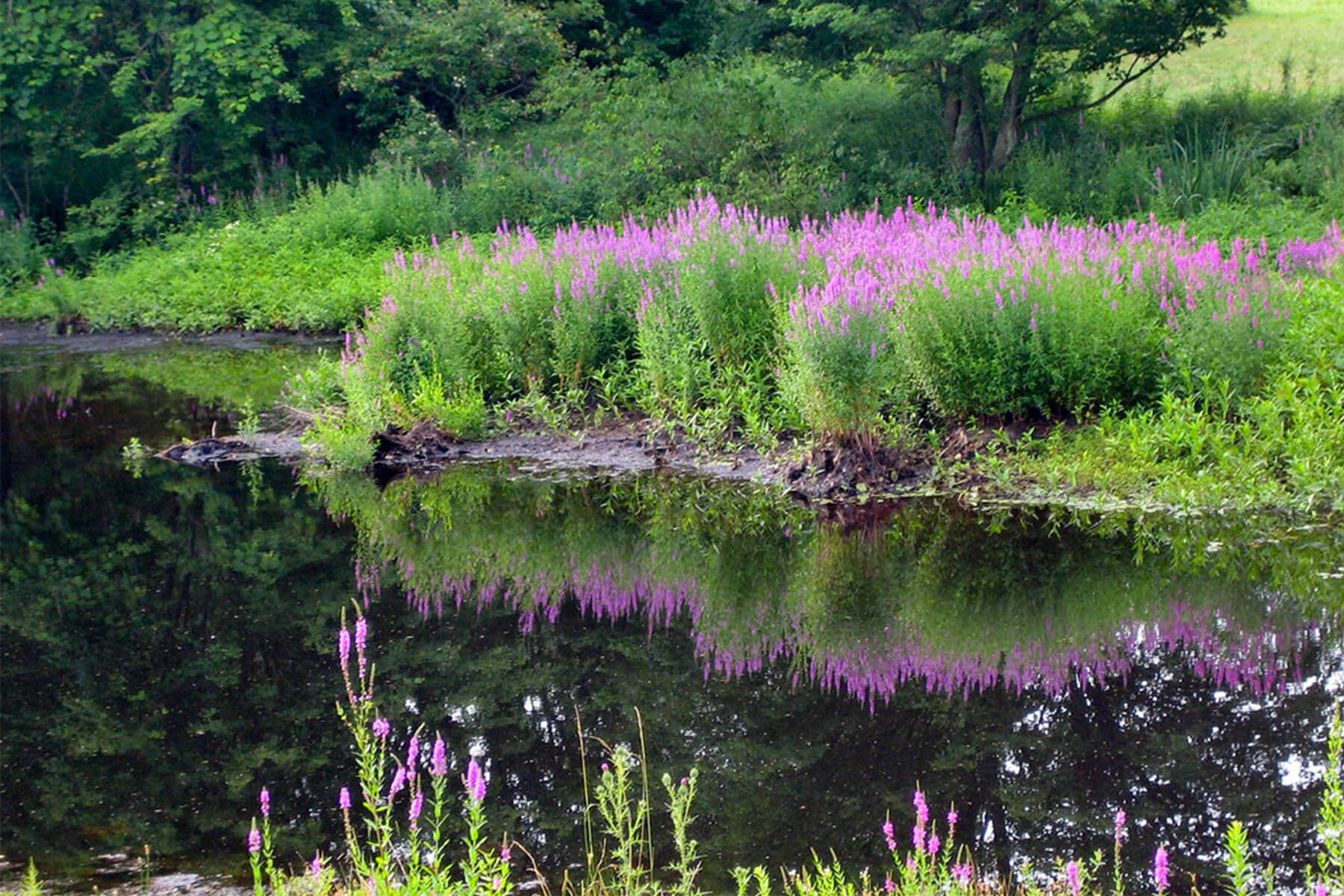
Purple loosestrife is a perennial plant with spikes of bright purple flowers that bloom in mid-to late summer. Native to Europe and Asia, the plant was both accidentally and intentionally introduced in the 18th and 19th centuries. Ship ballasts unintentionally carried the tiny seeds to North America while others planted it for its aesthetic value and healing properties.
The plant is considered invasive because it quickly establishes itself in wetlands, crowding out native plant species and producing up to 2 million seeds per year with no known natural predators.
Emerald Ash Borer
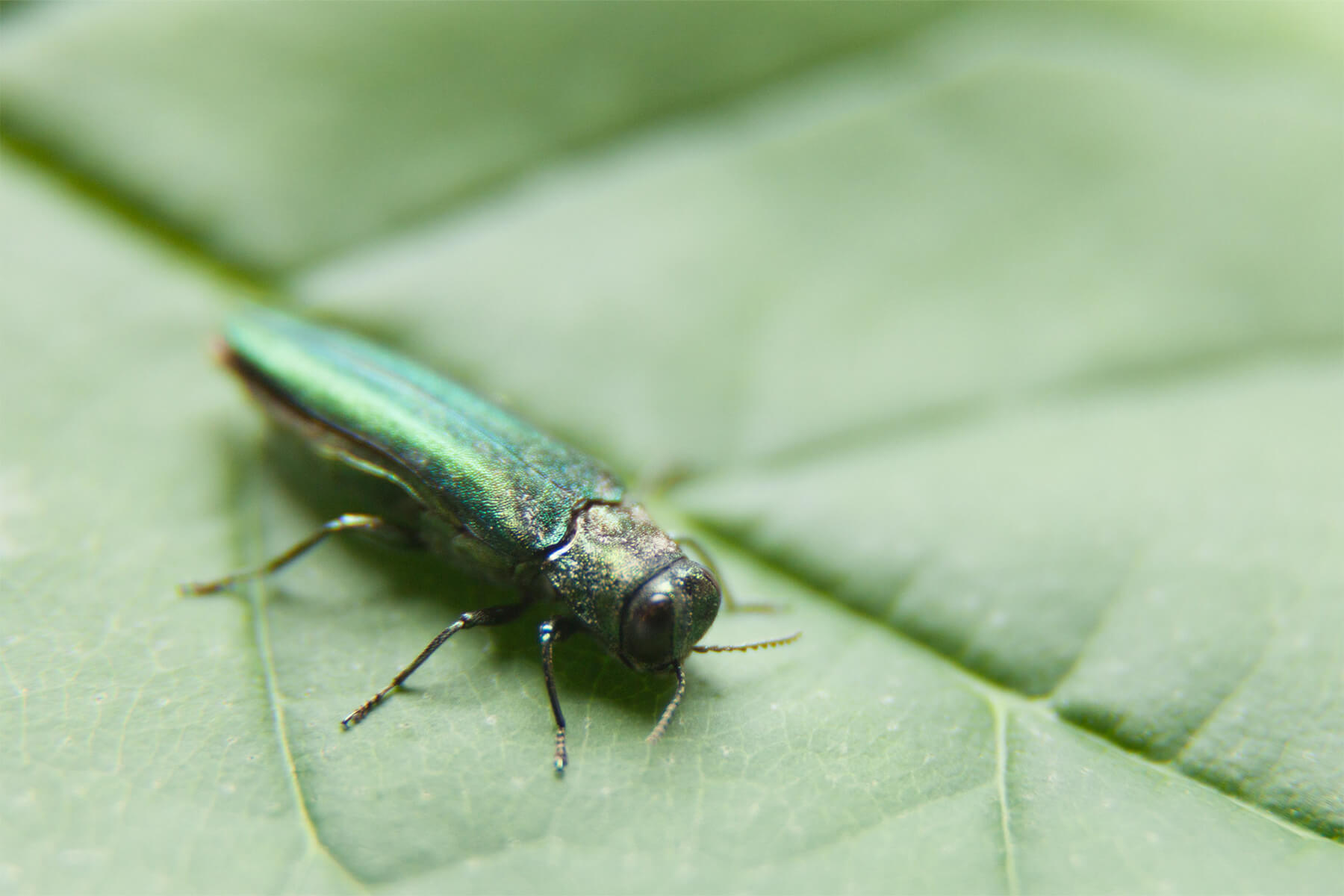
The emerald ash borer is a green, shiny beetle that lives on ash trees in certain parts of Virginia, Maryland and Pennsylvania. Native to Asia, the emerald ash borer was discovered outside of Detroit in 2002 and made its way to the Bay watershed in 2003 when a Michigan nursery shipped ash trees to Maryland. Adult beetles cause little damage to ash trees but larvae feed on the inner bark, disrupting the dispersion of water and nutrients throughout the tree.
Northern Snakehead
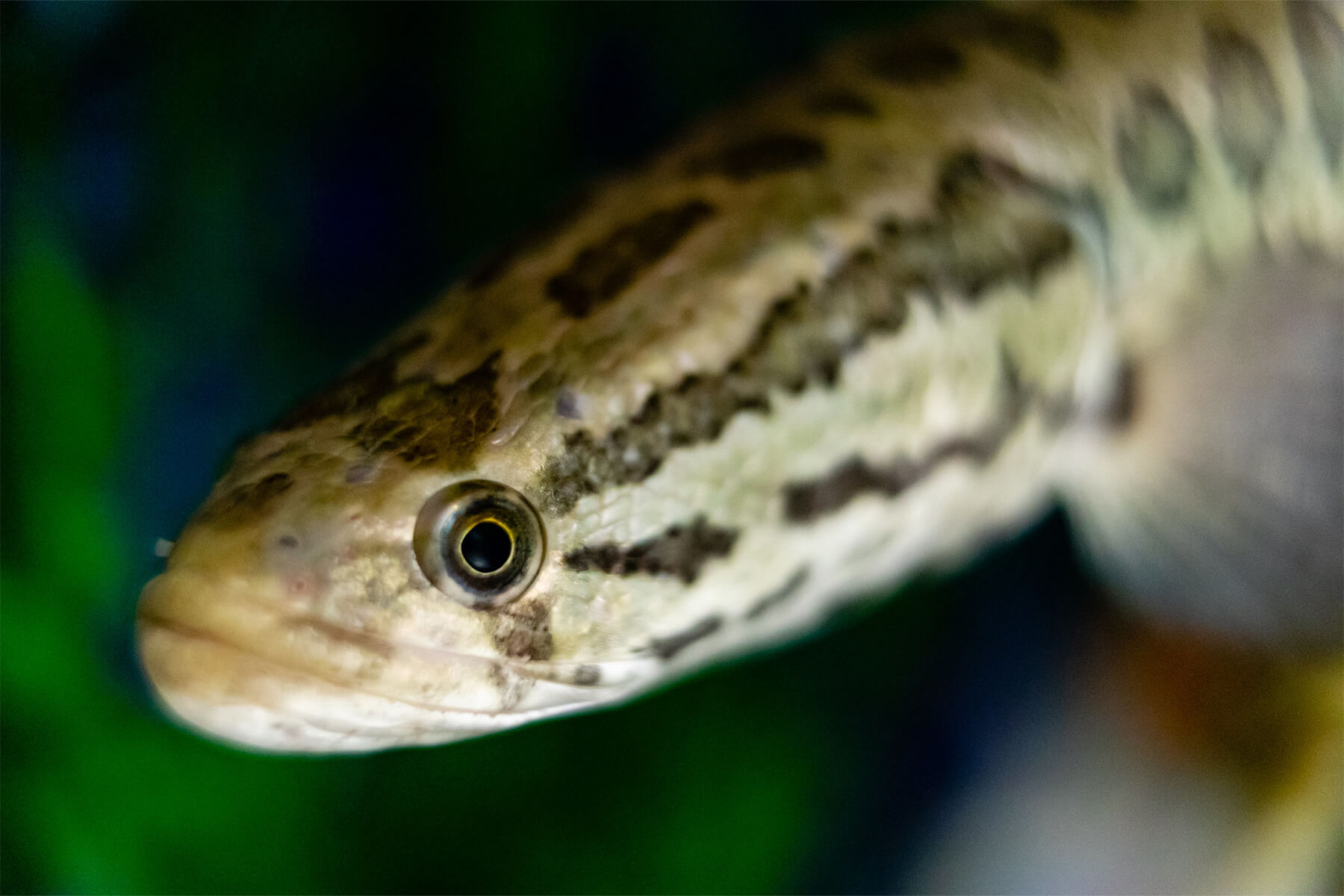
The northern snakehead is a large fish named after the snake-like pattern on its body that can grow up to 33 inches long and live out of water for up to four days. The fish is native to China, Korea and Russia and was most likely brought to the U.S. as a new species for fisherman and to be put in exotic aquariums.
This fish was first discovered in the Bay watershed in a pond in Crofton, Maryland, in 2002 and now is found in most major river systems in the watershed. With no natural predators and their high rate of reproduction (a female can lay 15,000 eggs at a time up to 5 times a year), the northern snakehead is a threat to native fish species in the Bay.
Veined Rapa Whelk
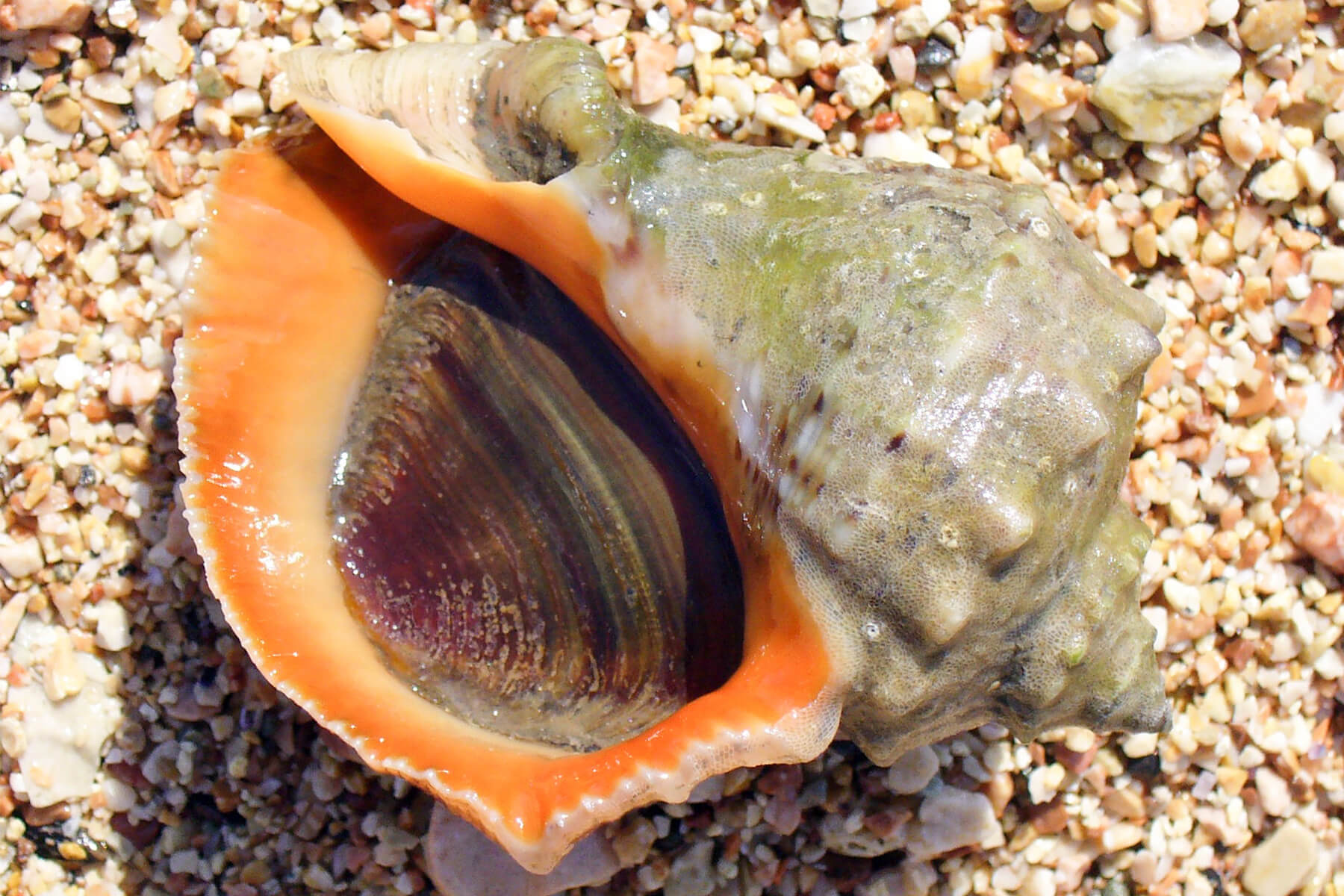
The rapa whelk is a large, predatory marine snail that inhabits the lower Bay. It is native to the Sea of Japan and the Bohai, Yellow and East China seas in Asia. It was first discovered in the Bay in 1998 by a trawl survey group from the Virginia Institute of Marine Science (VIMS) and is believed to have been transported in larval form through ballast water from trade ships.
It poses a threat to the Bay because it preys on native bivalves like clams, oysters and mussels, which are vital to the region’s economy and ecosystem. It feeds by wrapping itself around the hinge of its prey’s shell, then feeding between the openings.
Spongy Moth
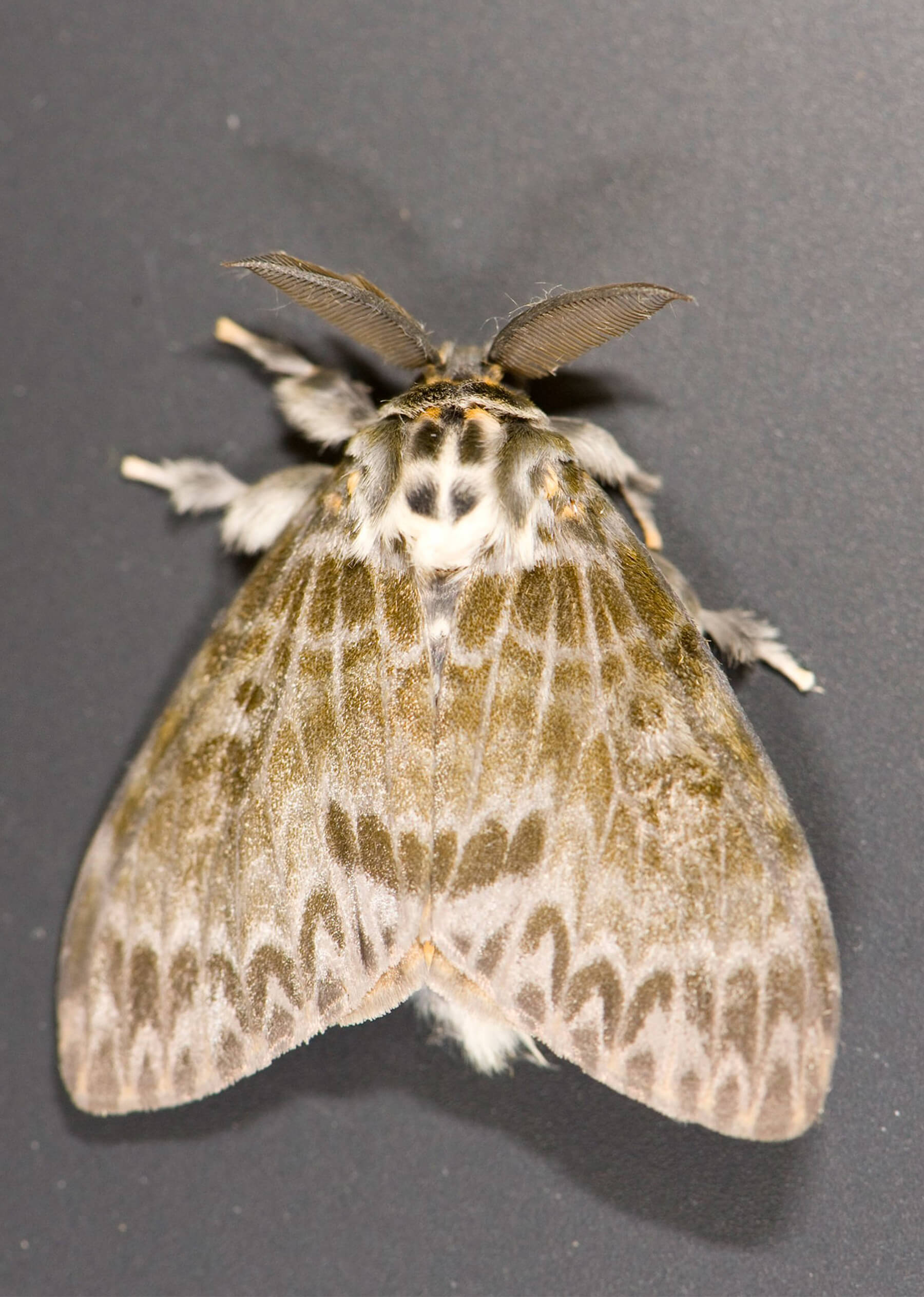
Previously known as the gypsy moth, the spongy moth is one of the most destructive pests that has ever been introduced to North America. Moth larvae gorge themselves on the foliage of shrubs and trees, leaving the plants bare and susceptible to disease and damage from other pests.
The gypsy moth was accidentally introduced to the United States in Medford, Mass., in 1869, by a professor conducting silk research. It has been established in parts of eastern North America for more than a century.

Comments
Spongy moth...spud...is...cute
Great list, helped me with my Life Science project.
This helped a lot with my project
Great list, Im using it for a school project thanks.
This is really cool. We are doing an ecosystem project in my class, and I think I might do one of these species.
some are cute some eh
This is really cool. We are doing an ecosystem project in my class, and I think I might do one of these species.
Many plants could be on this list as well. Think of just the vines English ivy, porcelain berry, kudzu, etc. pulling down or smothering trees. Or all the non-native shrubs and grasses that landscapers and homeowners plant that our native birds and insects don’t recognize as food creating huge swathes of land they won’t be able to survive in. We can do so much better!
Is snakehead not there?
some of them are cute
before fixing the ocean we need to change our self's first
Humans should be on this list
i love this
English ivy should be on this list. It killed two whole trees in my back yard.
Wow there are a lot of species! At my school camp we ripped out wineberries because they were invasive. It hurt!
This is not a full list of every invasive that is found in the Chesapeake Bay watershed. You are correct - the wineberry is considered invasive by every state in the watershed and the District of Columbia. For more information, please visit the Maryland Invasive Species Council: http://mdinvasives.org/iotm/sept-2006/
Are wine berries on here? We had to rip wine berries out at a camp by the Chesapeake bay.
I am doing a project on this it is cool
This is COOL
I have seen sevral nutrias swimming in Shady Side, where can we report ? Is there a phone number ? 8/20/18
much nice. i very like the nutria. gud pic.
We should kill them all. Show no mercy! They disrupt our ecosystem, we disrupt their life. We ought to have competitions to see who can kill the most invasive species. If they competitions become popular, it can solve all our problems.
new info for me
Thanks for the information.
Very good blog post.Really thank you! Fantastic. ceebeaeadefa
wow
in order to fix the problems in the water, we have to fix ourselves first
We've have go back to fix this mess!!!
hi :)
Hi Ray,
The Asian carp has not been found in the Bay or its tributaries, but it has caused problems in the Mississippi River (and some fear it has reached the Great Lakes). You can read more about the Asian carp here: http://www.bayjournal.com/article/officials_swap_stories_of_battle_against_invasive_species
We sell frozen green crabs for bait, a lot of our fishermen have said they can purchase them alive. We understand they were an invasive species to Virginia waters.
Is the invasive Asian carp found in the Bay and its tributaries? I had the misfortune of experiencing them in some southern rivers.
Jenna,
Nice summary of these species. I was drawn to the headline just to see which ones you guys picked. Good choices, though, as you know the list goes on.
Kent
Former CBPO Senior Scientist, Bay Journal Columnist
Very interesting.
Thank you!
Your comment has been received. Before it can be published, the comment will be reviewed by our team to ensure it adheres with our rules of engagement.
Back to recent stories